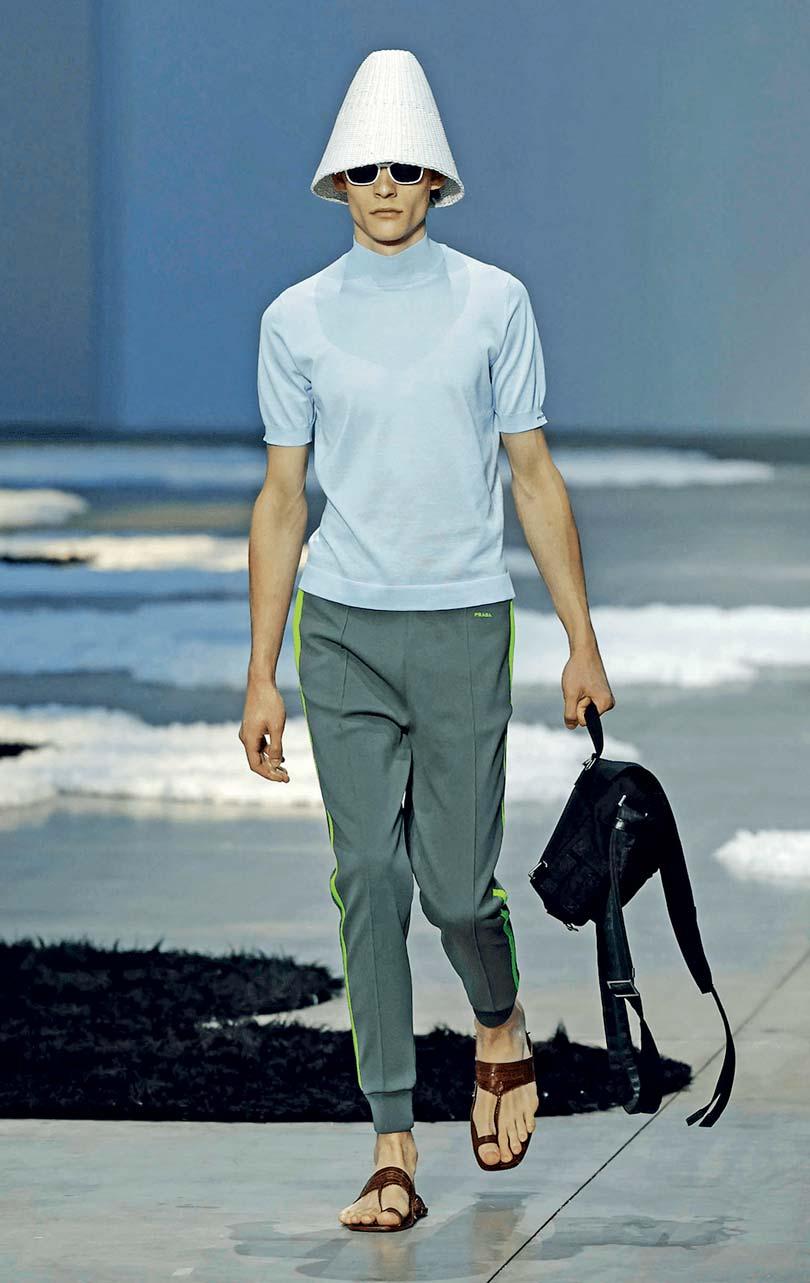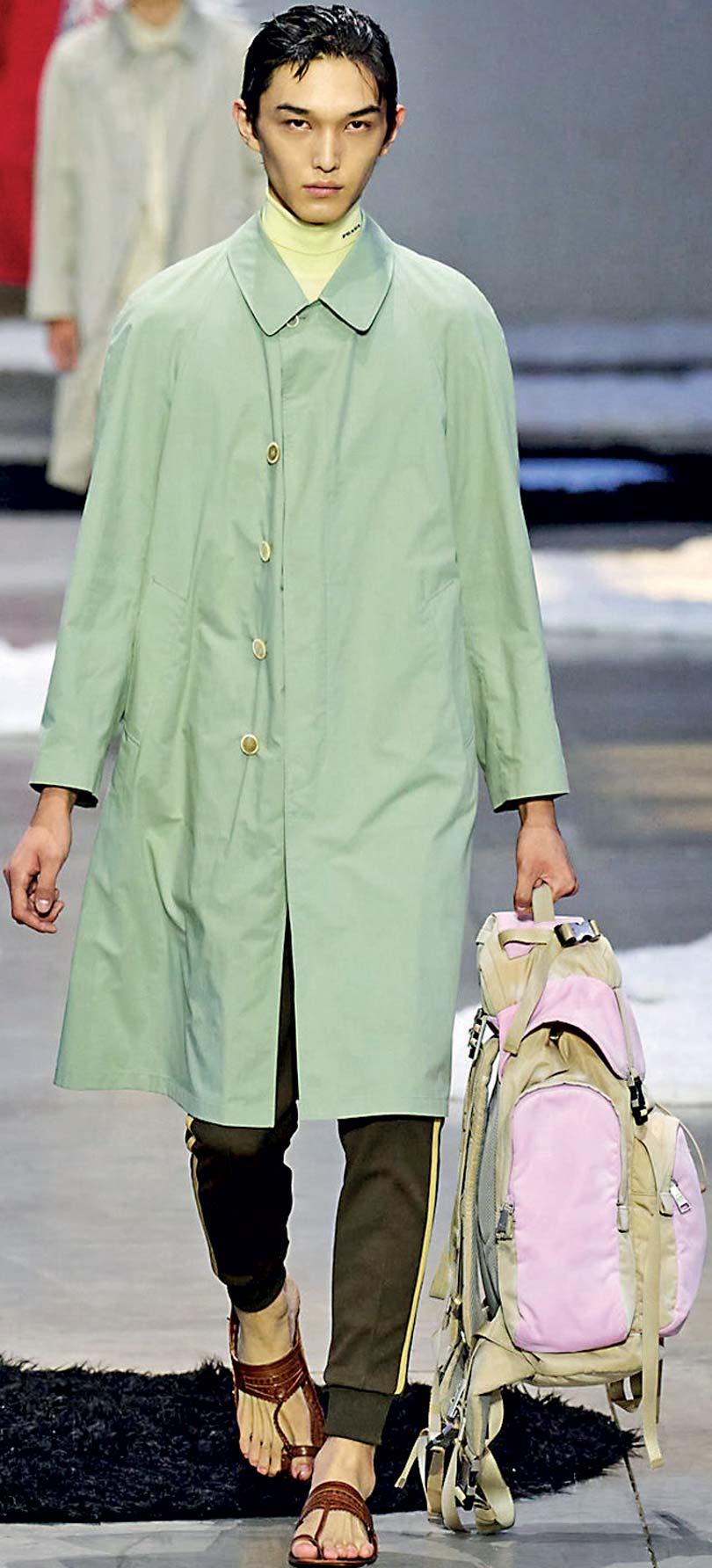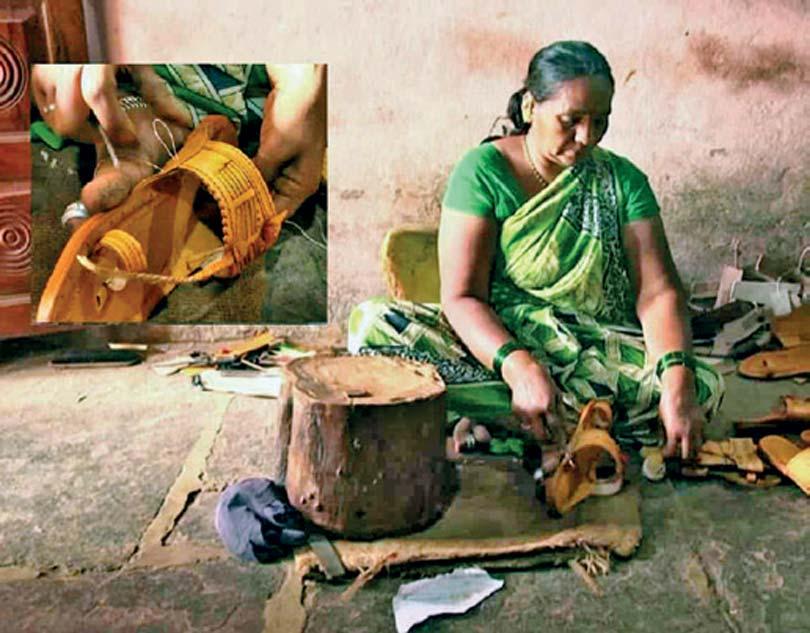




From the bustling streets of Kolhapur to the polished runways of Milan, the Kolhapuri chappal just made its high-fashion debut at Prada’s Spring/Summer 2026 menswear show. Except, the spotlight came without a label - or a lineage. Appropriation or appreciation? Borrowing or stealing?
Call them toe-ring sliders, leather thongs, handcrafted flats. Or simply, as millions of Indians have done for centuries: Kolhapuris. At Prada’s show, the iconic sandals made a quiet yet unmistakable appearance, preceded only by a cryptic show invite - a single leather loop attached to a card. For many Indian fashion watchers, it was a visual cue too familiar to miss. But while the West gasped at what seemed like a novel silhouette, South Asian observers knew exactly what they were looking at.
Still, you wouldn’t know it from the press releases. Glossy fashion roundups rebranded them as “leather flats,” neatly sidestepping centuries of cultural heritage in favor of editorial-friendly buzzwords. It’s the turmeric latte syndrome all over again: take something ancient and Indian, repackage it, and forget to include a return address.
Let’s not get it twisted - there’s a fine line between homage and appropriation, and luxury fashion is a repeat offender in blurring it with surgical precision. In this case, the Kolhapuri has arrived on the global stage—but stripped of its story, name, and context.
So, allow us to reintroduce it. Kolhapuris hail from Kolhapur, Maharashtra, and have been handcrafted since the 18th century. Each pair is a labour of love and legacy, shaped by artisans who tan, stitch, oil, and emboss leather with time-honed skill. From the featherweight rollable versions worn by everyday vendors to the armour-like senapati styles favored by Maharajas, the Kolhapuri has traversed caste, class, and time—all while staying defiantly itself.
So yes, seeing it on a Prada runway matters. It’s rare for Indian craft to be presented in its original, unedited form on a global luxury stage. But when the credit is missing, so is the point.
Because here’s the thing: in fashion, “inspired by” can be a polite euphemism for “borrowed without permission.” Slapping a logo on traditional craft may bring visibility, but does it bring value to the communities that created it? The ones who still earn modest incomes for hours of intricate work while the West cashes in on centuries-old designs? Cultural appropriation, on the one hand, can be a celebration of that cultural exchange when done respectfully and tastefully. But it can also take from cultures and people’s heritage, often leaving them out of the story entirely. Who can forget the cultural misappropriation reimagined as fashion as an example of inspiration for designers like Jean Paul Gaultier for Dior, Ricardo Tisci for Givenchy and Dolce & Gabbana in the past! The most recent that I can remember was Gucci who was heavily criticized after the luxury fashion house sent white models down the runway wearing traditional Sikh turbans for its Autumn/Winter 2018 show. Traditionally in Sikhism, a turban is worn by both men and women as a symbol of piety, honour and spirituality.
Some brands have learnt from their past and are now. Getting it absolutely right. Dior’s stunningly exquisite Pre-Fall 2023 show in Mumbai honored Indian artisans by name, mirror work, Madras checks, Nehru collars, and all. Christian Louboutin teamed up with Indian fashion legend Sabyasachi to create an Indo-French collection that wore its Indian influences proudly and credited them just as openly. These weren’t just collections; they were cultural conversations.
But too often, we get a “Scandinavian scarf” moment, when a dupatta gets rebranded for Western palates. A sari becomes a wrap dress. A Kolhapuri becomes a “heritage-inspired slipper.”
So, will Prada acknowledge its Kolhapuri cameo for what it is? Maybe. Maybe not. But the real question is: when the story skips over the artisans, who gets left behind?
It’s the craftsmen of Kolhapur, whose generational artistry built the very sandals now lighting up Instagram, that often remain invisible. When their work walks the runway without their names, it’s not just cultural erasure. It’s economic erasure. Playing dress up in other people’s style! I would imagine the price point of the “chapal” to be astronomical as well.
Thankfully, a new wave of Indian designers and labels are reclaiming the narrative—working directly with artisans, elevating traditional craft without diluting its soul.
These special slippers can be found in many shops all over our island as well, so if you’d like a pair for SS26 or earlier, don’t fret, Leather Collection, The Design Collective and even DSI have got you covered. The Kolhapuri isn’t just stylish - it’s a statement. And I don’t believe anyone needed Prada’s validation to know that. But some credit to its makers? That would be nice.










